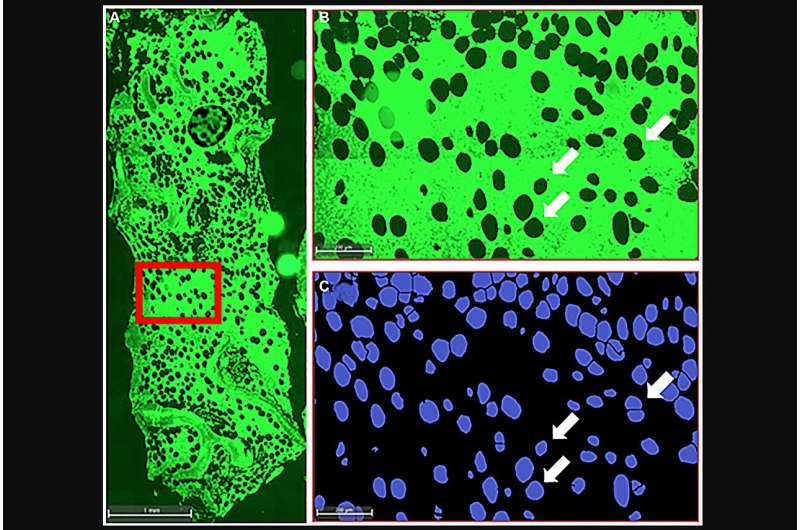This article has been reviewed according to Science X's editorial process and policies. Editors have highlighted the following attributes while ensuring the content's credibility:
fact-checked
peer-reviewed publication
proofread
Bone marrow adipocytes provide early sign of progression from MGUS to multiple myeloma

A new research perspective titled "Bone marrow adipocytes provide early sign for progression from mgus to multiple myeloma" has been published in Oncotarget.
Multiple myeloma (MM) is the second most common hematological malignancy and is characterized by clonal expansion of malignant plasma cells in the bone marrow. In spite of recent advances in the field of MM, the disease has remained incurable. MM is preceded by a premalignant state known as monoclonal gammopathy of undetermined significance (MGUS), with a risk of progression to MM of 1% per year. Establishing a scalable approach that refines the identification of MGUS patients at high risk of progression to MM can transform the clinical management of the disease, improve the patient's quality of life, and will have significant socioeconomic implications.
In this new perspective, researchers from the Danish Spatial Imaging Consortium, University of Southern Denmark, University of Copenhagen, University of Aarhus, Odense University Hospital, and Lillebaelt Hospital provide evidence that changes in the bone marrow adipose tissue (BMAT) provide an early sign for progression from MGUS to MM.
"We employed AI-assisted histological analysis of unstained bone marrow biopsies from MGUS subjects with or without progression to MM within 10 years (n = 24, n = 17 respectively)," write the researchers.
Although the BMAT fraction was not different between the two groups, bone marrow adipocyte (BMAd) density was decreased in MGUS patients who developed MM, compared to non-progressing MGUS patients. Importantly, the distribution profile for BMAd size and roundness was significantly different between the two groups, indicating a shift toward increased BMAd size and roundness in MGUS patients who developed MM.
These early changes in the BMAT could serve as valuable early indicators for the transition from MGUS to MM, potentially enabling timely interventions and personalized treatment strategies.
The researchers conclude that "[...] the AI-based approach for histological characterization of unstained bone marrow biopsies is cost-effective and fast, rendering its clinical implementation feasible."
More information: Bilal M. El-Masri et al, Bone marrow adipocytes provide early sign for progression from MGUS to multiple myeloma, Oncotarget (2024). DOI: 10.18632/oncotarget.28548


















